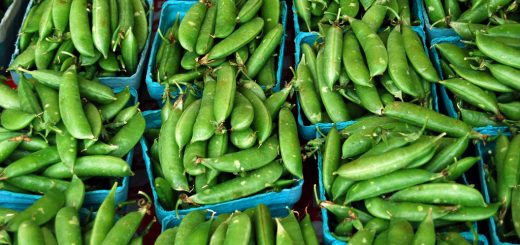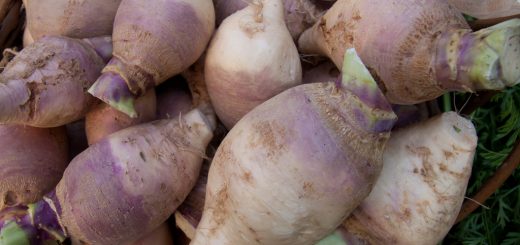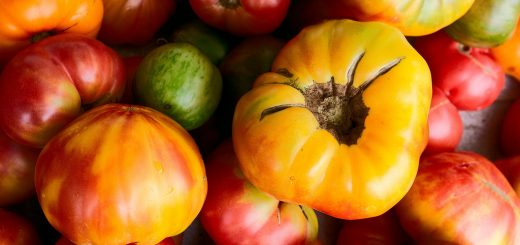Kohlrabi

Kohlrabi is neither a root nor a leafy vegetable but a swollen stem (a member of the cabbage family) that grows perched on top of the ground. This versatile veggie is underutilized in the U.S. but is common in Central Europe and Asia. Some claim it tastes a little like a turnip, others like a cabbage. Not surprising since it was bred from a combination of the German “kohl” (cabbage) and “rabi” (turnip). It is an excellent source of potassium and vitamin C and also includes some calcium and vitamin A. The taste and texture is similar to that of a broccoli stem, accented by radish, but is much sweeter and milder.
Both the kohlrabi greens and the bulb can be eaten. To store, remove the greens from the bulb and place both in perforated plastic bags in the crisper. The greens need to be eaten quickly as they won’t stay fresh long. Prepare them as you would mustard greens or collards. The bulbs can be stored unwashed, and will keep for several weeks in the fridge, but they are best eaten with a week, as the older they get, the woodier they become.
Kohlrabi can be eaten raw, steamed, sautéed, roasted, mashed, or stuffed. A simple preparation is to peel the outer skin with a paring knife, then slice, dice or grate it and add to salads or serve as part of a crudités dish with a creamy dressing. Grated Kohlrabi can be cooked like potato pancakes, or added to slaws, but lightly salt it first, let stand for a few minutes and then squeeze out the excess water before dressing. If you decide to steam or boil it, peel it after it’s cooked. Season kohlrabi with butter, salt and pepper, cheese sauce or enjoy plain. The most versatile vegetable you have never heard of!


